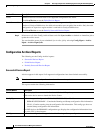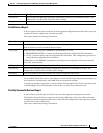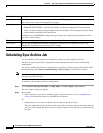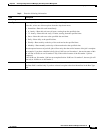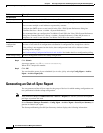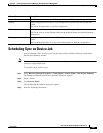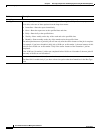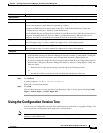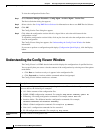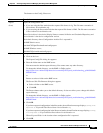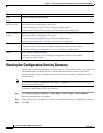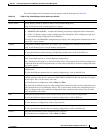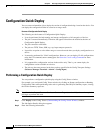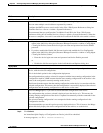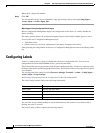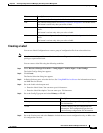
8-40
User Guide for Resource Manager Essentials 4.1
OL-11714-01
Chapter 8 Archiving Configurations and Managing Them Using Archive Management
Understanding the Config Viewer Window
To view the configuration Version Tree:
Step 1 Select Resource Manager Essentials > Config Mgmt > Archive Mgmt > Version Tree
The Device Selection dialog box appears.
Step 2 Select a device. See Using RME Device Selector for information on how to use RME Device Selector.
Step 3 Click OK.
The Config Version Tree dialog box appears.
Step 4 Click either the configuration version which is a hyper link or select the radio button for the
configuration version.
To expand the configuration version folder, click on plus icon and select the configuration version to
view the configuration.
The Config Viewer dialog box appears. See Understanding the Config Viewer Window for further
information.
If you want to perform a configuration quick deploy (Configuration Quick Deploy), click the Deploy
button.
Understanding the Config Viewer Window
The Config Viewer is a HTML-based window which displays the configurations of specified devices.
You can specify how you want to view the contents of the configurations by selecting one of the options
under Show:
• Click Raw to view data exactly as it appears in the configuration file.
• Click Processed to view data with the commands ordered and grouped.
The Config Viewer window contains two columns.
Column Description
Configlets
Click on any configlets to display the corresponding information. The available configlets vary from
device to device; the following are examples:
• All—Entire contents of the configuration files.
• SNMP—SNMP configuration commands. For example, snmp-server community public RO.
• IP Routing—IP routing configuration commands. For example, router abcd 100.
• Interface folder—The different interface configuration commands. For example,
Interface Ethernet0 and Interface TokenRing.
• Global—Global configuration commands. For example no ip address.
• Line con 0—configuration commands for line console 0.
• IP—IP configuration commands. For example, ip http server.
Configuration file
name
View the contents of configuration file.



